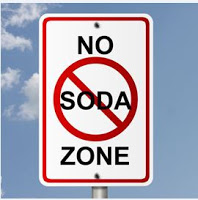Americans are eating fewer calories, but need to cut back more if they want to combat the obesity epidemic

 |
| image from fitfamilytogether.com |
Much of this calorie decrease has come from people drinking less full-calorie soda, of which consumption has decreased in the U.S. by 25 percent since the 1990s, Sanger-Katz reports. Credit is also given to an influx of scientific research that emerged in the 1990s about the costs of obesity, and to more recent public health campaigns.
“I think people are hearing the message, and diet is slowly improving,” Dr. Dariush Mozaffarian, the dean of the Friedman School of Nutrition Science and Policy at Tufts University, told the Times.
Americans’ eating habits began to rapidly change in the mid-1970s, with calorie consumption increasing steadily to its highest peak in 2003, Sanger-Katz writes.
“This was like a freight train going downhill without brakes,” Kelly Brownell, dean of the Sanford School of Public Policy at Duke University, told the Times. “Anything slowing it down is good.”
 |
| image from The New York Times |
Three large sources of data about diet have convinced many health officials that the changes in calorie consumption are meaningful, reports the Times. The first two sources, detailed daily food diaries tracked by government researchers and data from food bar codes and estimates of food production, show a reduction in calories consumed by the average American since the early 2000s. The third source shows a leveling off of the national obesity rate.
While the trend toward eating fewer calories had already begun to surface, a Centers for Disease Control and Prevention report in 1999, which showed the worsening obesity rates in the 1980s and 1990s across the nation, is thought to be the first breakthrough in understanding the magnitude of America’s obesity problem. Soon after this study was released, the surgeon general issued a report that summarized the effects of obesity as a risk factor for several chronic diseases.
Now the Patient Protection and Affordable Care Act requires chain restaurants to publish the calorie content of their meals, and in 2012 the federal government introduced new healthier standards for school meals for the first since 1995. Several cities have also increased their efforts to combat the obesity epidemic by subsidizing produce for the poor, limiting unhealthy foods in day care centers, and placing taxes on sugar-sweetened beverages, reports the Times.
The most common theme of anti-obesity public health campaigns has been a focus on decreasing the consumption of sugar sweetened beverages, reports the Times. And it seems to have worked.
“Americans, on average,purchased about 40 gallons of full-calorie soda a year in 1998, according to sales data from the industry trade publication Beverage Digest analyzed by the Center for Science in the Public Interest. That fell to 30 gallons in 2014, about the level that Americans bought in 1980, before the obesity rates took off,” Sanger-Katz reports.
But public officials in the article also note that while overall Americans are eating less of everything, they aren’t eating a healthier diet; the consumption of fruits and vegetables remains low, and the consumption of desserts remains high.
 |
| Chart from “The State of Obesity” report, 2014 |
Notably, more than a third of American adults are still considered obese, which also holds true in Kentucky, which ranks fifth in obesity among the states and has moved up in rank over the years, according to the 2014 “State of Obesity” report.
There are demographic differences, and nagging problems. White families have reduced their calories more than black and Hispanic families; families with children have cut back the most; and Americans who are considered the heaviest have cut back the least, with their weight and waist circumference continuing to increase.
A paper by Kevin Hall, a researcher at the National Institutes of Health, says that the recent reductions in calories are not enough to stem the current obesity epidemic, estimating that for Americans to return to the body weights of 1978 by 2020, an average adult would need to reduce calorie consumption by 220 calories a day.